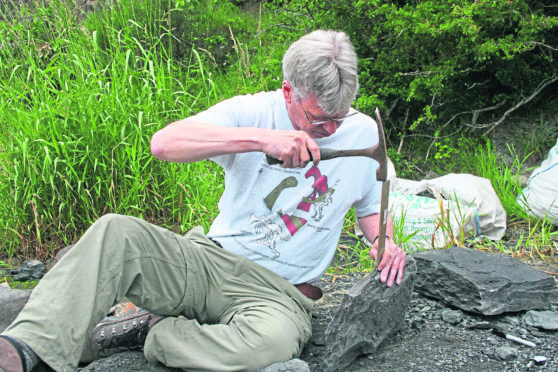A leading expert on dinosaurs is hoping new technological advances will help solve the mystery of the “Elgin reptiles”.
Nick Fraser, a former Aberdeen University graduate, who is now Keeper of Natural Sciences at National Museums Scotland, has established himself as a globally-renowned palaeontologist.
He had made important findings in such diverse locations as the United States, China, and on Skye and in the Scottish Borders.
>> Keep up to date with the latest news with The P&J newsletter
And now he is keen to discover more about the “internationally significant area” of Moray.
Mr Fraser, who is currently in New Mexico, said: “We’ve known since the nineteenth century about the so-called ‘Elgin reptiles’, in the sandstones around Elgin and Lossiemouth.
“These rather obscure fossils are generally nothing much to look at – in fact you would be forgiven for overlooking them completely.
“But these rocks and associated fossils range from around 230-260 million years old and so they are contemporaneous with the earliest of the dinosaurs.
“It has even been suggested that there is one of the world’s oldest dinosaurs in these rocks and we are looking to investigate this further.
“The advent of Computed Tomography (CT scanning) has opened up a whole new way of studying them.
“So there is now an opportunity to get much clearer images of these fossils which we expect will provide a much better understanding of them – and maybe we can confirm the Elgin dinosaur in the years ahead.”
Mr Fraser has led a number of major fossil excavations ranging from Jurassic dinosaurs in Wyoming and a major bone bed of 14 million-year-old whales in Virginia to aged plant fossils in northern China.
However, much of his recent work has been carried out on Skye.
He added: “It might seem a long way from places such as the Gobi desert or the famed deposits in northern China, but many of the rocks around Skye’s rugged coastline are Middle Jurassic in age.
“The fossils have been around for 140 million years and are in no hurry to give themselves up to enthusiastic palaeontologists.
“But, with patience and luck, we are beginning to appreciate that in the future, Skye will occupy an important place in the research of early lizards, dinosaurs and mammals.”
